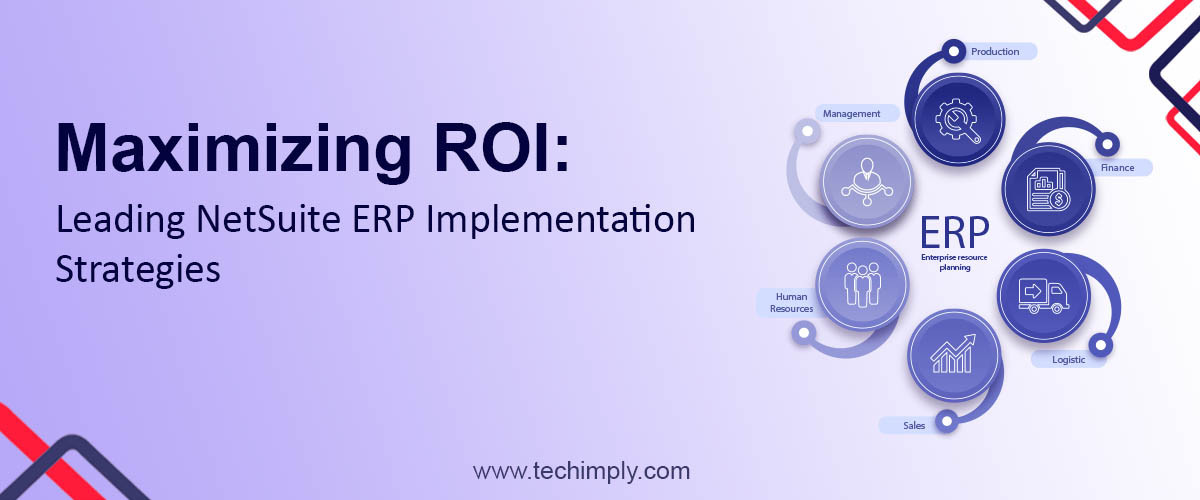Transitioning to a new ERP software is a significant endeavor for any organization. Various case studies have demonstrated that selecting the right ERP implementation strategy greatly increases the likelihood of business success.
An ERP system is a comprehensive software suite that encompasses multiple aspects of an organization, including accounting software, manufacturing, inventory management, distribution, and sales.
Due to its extensive impact on different areas of the business, careful planning is essential for a successful rollout, which involves stages such as initial analysis, design, deployment, and support.
During the deployment stage, there are several effective NetSuite ERP implementation strategies available, each offering distinct advantages. This article highlights some of the leading NetSuite ERP implementation strategies that will businesses unlock the full potential of Oracle NetSuite.
5 Effective NetSuite Implementation Strategies For Businesses
- Big Bang:
The Big Bang approach involves a drastic shift strategy where the organization undergoes a complete shift to the new ERP Software all at once. This approach aims for faster implementation and cost optimization, allowing the company to immediately reap the benefits of a modern ERP system.
By migrating all staff and business functions simultaneously, the organization can avoid the complexities of maintaining multiple systems and ensure a consistent user experience across the board.
However, this approach carries certain risks. It is challenging to roll back if issues arise, and the simultaneous changeover can lead to multiple failures if not properly planned and executed.
Therefore, careful preparation, thorough testing, and stakeholder buy-in are essential to mitigate risks and ensure a successful transition to the new ERP Software.
You can also with a NetSuite implementation partner to avoid any of these pitfalls and ace the NetSuite ERP implementation journey.
- Phased Deployment By Module:
This is one of the widely used NetSuite ERP implementation strategies, the implementation of the new ERP system occurs in stages, focusing on individual modules that cover specific business functions. This approach provides a step-by-step solution that allows the organization to address the unique needs of each department.
By implementing modules gradually, the organization can ensure a smoother transition, as employees can become accustomed to the new system incrementally. Additionally, it enables more focused testing and training efforts for each module.
However, this approach may result in a longer implementation timeline, as each module requires its own analysis, design, and deployment phase. Integration between modules can also pose challenges, and there is a risk of inconsistency or overlap during the transition period.
Despite these potential drawbacks, the phased deployment strategy offers a relatively safe and structured approach that minimizes disruption and allows for better alignment with business needs.
- Parallel Rollout:
The parallel rollout ERP implementation strategy involves running the new ERP Software alongside the existing one for a period. This approach provides a safety net by allowing the organization to revert to the old system if issues arise during the transition.
It also allows for a gradual migration of data and processes from the old system to the new one, reducing the risk of data loss or inconsistencies.
However, implementing a parallel rollout requires additional effort, as data needs to be entered into both systems, potentially leading to human errors and discrepancies.
Moreover, maintaining two systems simultaneously can be resource-intensive and complex. Effective coordination and synchronization between the two systems are crucial to ensure data integrity and a smooth transition.
Despite these challenges, the parallel rollout strategy offers a controlled transition approach and provides a fallback option in case any issues arise during the implementation of the new ERP Software.
- Hybrid Rollout:
The hybrid rollout strategy combines elements of phased deployment and parallel rollout, leveraging their strengths to create a customized approach that suits the organization's specific needs. This strategy aims to minimize implementation risks while optimizing the benefits of the new ERP system.
By tailoring the implementation approach for different modules or business functions, the organization can address its unique requirements effectively. This blended strategy allows for a controlled and gradual transition, reducing the impact on operations and enabling better testing and training opportunities.
However, the hybrid rollout approach can be more time-consuming, and resource-demanding compared to other strategies. It requires careful planning, coordination, and the allocation of appropriate resources to ensure a successful integration of phased and parallel elements.
Organizations considering the hybrid rollout strategy should weigh the benefits of customization against the potential challenges of increased complexity and resource requirements.
-
Pilot Rollout:
The pilot rollout strategy involves implementing the new ERP system in a single, highly profitable business function or department as a testing ground before expanding to other areas. This approach allows the organization to assess the system's capabilities, performance, and user acceptance in a controlled environment.
By focusing on a limited scope initially, the organization can derive maximum benefits and identify any issues or improvements before a full-scale implementation. However, the pilot rollout strategy comes with its own considerations.
The transition period between the pilot function and other functions may lengthen the overall implementation timeline, as adjustments and customization may be necessary based on the lessons learned.
Additionally, the impact of the ERP system on a larger scale may not be fully assessed during the pilot phase alone.
Despite these potential limitations, the pilot rollout strategy provides a relatively safe and cost-effective approach to validate the system's effectiveness and maximize its value to the organization.
Conclusion
There are several NetSuite ERP implementation strategies that organizations can consider when transitioning to a new ERP system. Each NetSuite ERP implementation strategy mentioned above has its own advantages and risks, and it's important to understand them before deciding.
Proper planning, stakeholder engagement, and thorough testing are vital to ensure a successful NetSuite ERP implementation.
By making an informed decision and leveraging NetSuite ERP implementation and NetSuite support strategies, organizations can navigate the challenges and maximize the benefits of their new ERP system, ultimately enhancing their operational efficiency and competitiveness in the market.





